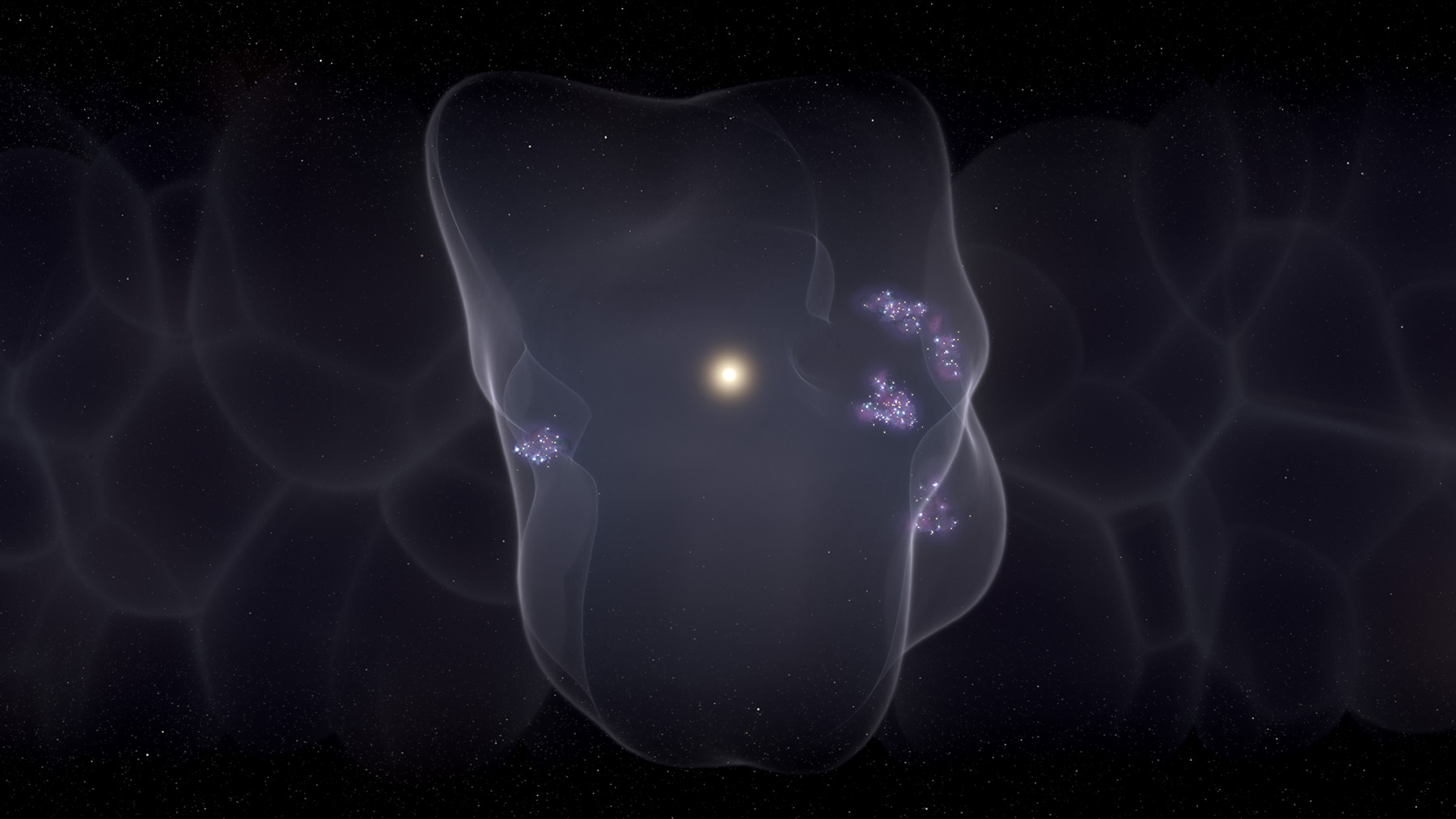Image List
-

Artist's illustration of the Local Bubble with star formation occurring on the bubble's surface. Scientists have now shown how a chain of events beginning 14 million years ago with a set of powerful supernovae led to the creation of the vast bubble, responsible for the formation of all young stars within 500 light years of the Sun and Earth. Credit:
Leah Hustak (STScI) -

This video describes new research linking an interstellar void known as the Local Bubble to nearby star-forming regions. It begins by zooming into an artist’s rendering of the Milky Way to our own galactic neighborhood. Next, an animation beginning 14 million years ago steps through time to show how a series of supernovas created the Local Bubble. As the bubble expands, it sweeps up gas and dust that condense to form star clusters. The video then resets to 14 million years ago and steps forward again to show how the Sun’s path through the Milky Way galaxy brought it into the Local Bubble about 5 million years ago. Today, we're coincidentally close to the middle of the bubble. Finally, the video pans around a 3D model of the Local Bubble and associated star-forming regions as they exist today.
STScI